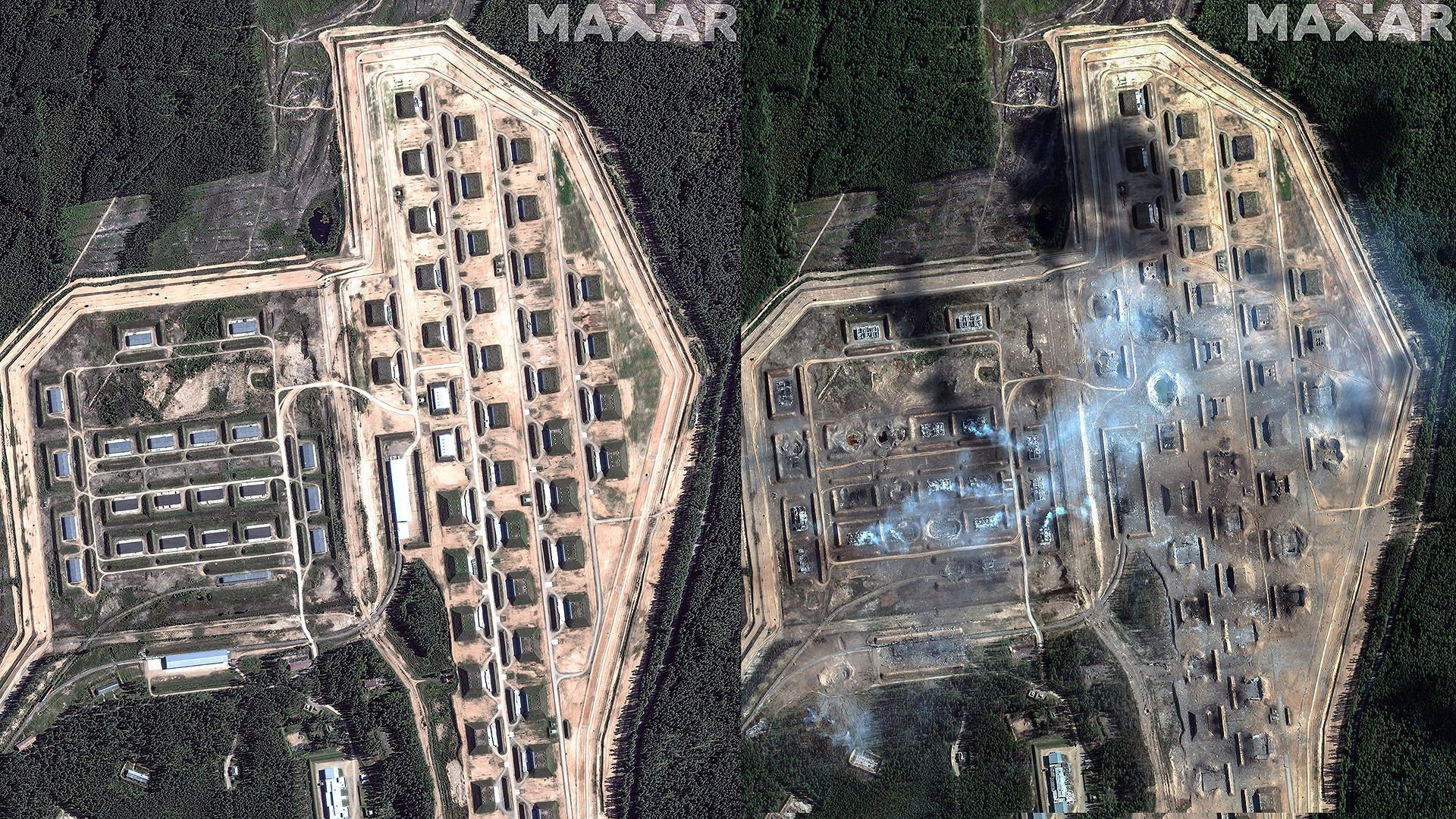New satellite imagery shared with The War Zone shows just how badly three ammunition storage sites in Russia were damaged in recent Ukrainian drone attacks. The strikes, against the Toropets and Oktyabrsk facilities west of Moscow and Tikhoretsk in southern Russia, resulted in tens of thousands of tons of ammunition – including North Korean missiles – being destroyed, Ukrainian and Estonian authorities said.
Ukrainian officials acknowledged Tikhoretsk and Okyabrsk were attacked on Sept. 21 while Toropets was hit on Sept. 18.
Tikhoretsk is located in the Krasnodar region, about 220 miles from the front lines. According to the U.S. Mission to the UN, the White House determined that it was one of the storage facilities for ballistic missiles provided by North Korea. You can see a video of that attack below.
There has been “a dramatic increase in activity at this site starting in the fall of 2023,” according to the Center for Strategic and International Studies (CSIS). “Prior to 2023, the Tikhoretsk Munitions Storage Facility, sometimes reported to be the 719th Artillery Munitions Base…has been primarily concerned with the storage and maintenance of artillery munitions, artillery systems, and related equipment. The facility is secured with a multiple-layer security fence with guard towers, encompasses approximately 2.6 km2, and is served by a rail spur line from the small rail facility at Tikhon’kii (Tikhon’kiy), 3 km to the north.”
The images below, taken Sept. 14 and provided by Maxar Technologies, show what Tikhoretsk looked like before the drone attack.
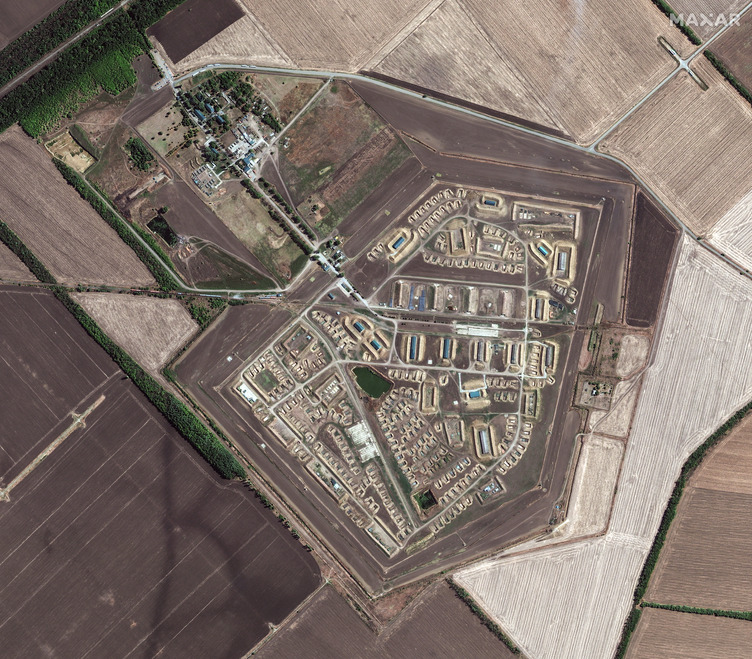
Images captured on Sept. 22, a day after the attack, show extensive damage. Scores of storage facilities appear to be destroyed or badly damaged and scorch marks cover a wide swath of the 2.6 square kilometer facility. The Ukrainian Armed Forces General Staff said on its Facebook page that there were more than 2,000 tons of ammunition, including North Korean missiles, stored at Tikhoretsk. In addition, a Podlet radar station, which monitored aerial targets in the direction of the arsenal, was hit during the operation, according to the General Staff.
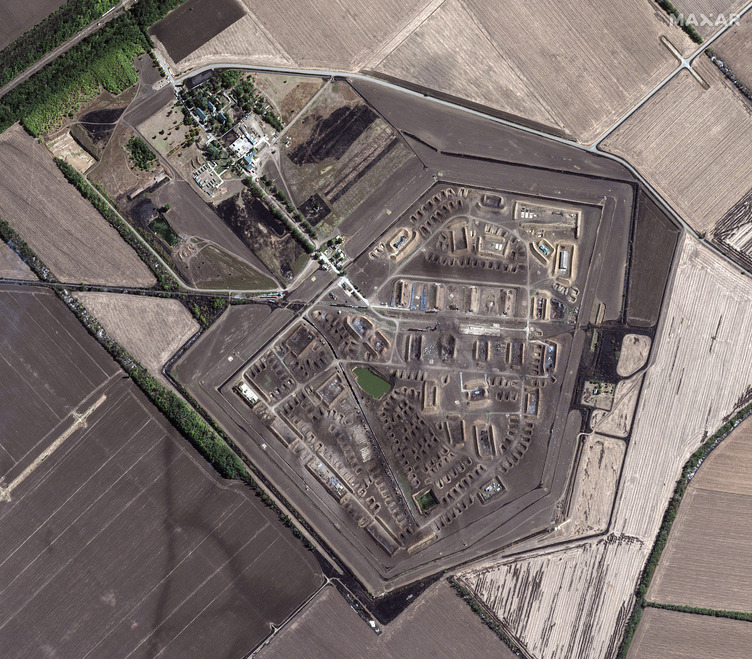
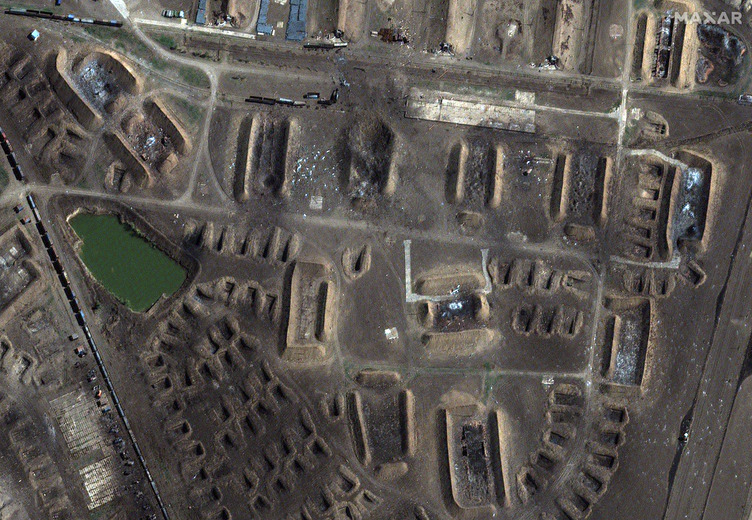
About 750 miles northwest of Tikhoretsk, Ukraine’s State Security Service (SBU) struck the Oktyabrsk ammunition storage site, according to the Ukrainian Armed Forces General Staff. Located 300 miles north of the border, Oktyabrsk is home to the 23rd Artillery Arsenal. According to CNN, it is “allegedly used to store Iskander tactical missile systems and Tochka-U tactical missile systems.”
A Maxar image taken Sept. 18 shows the ammunition storage buildings before the attack.
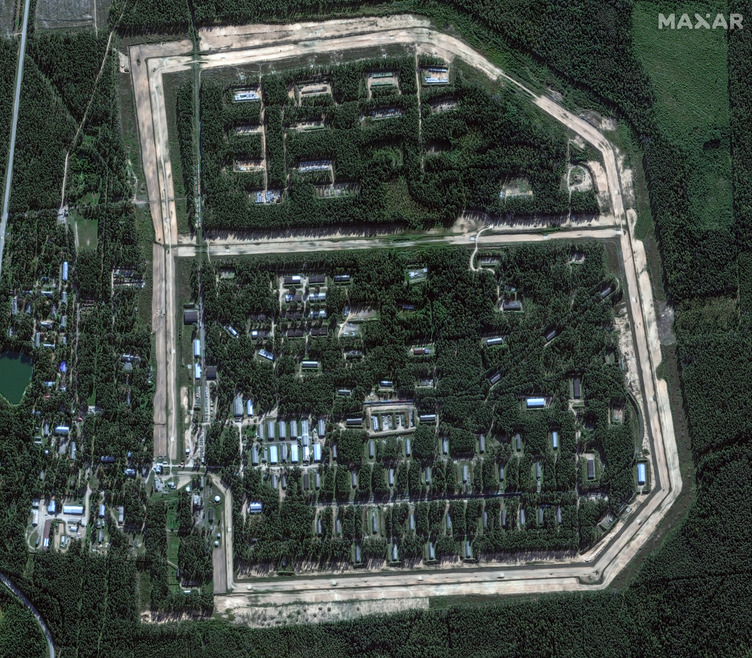
After the attack, most of them appeared to have suffered extensive damage.
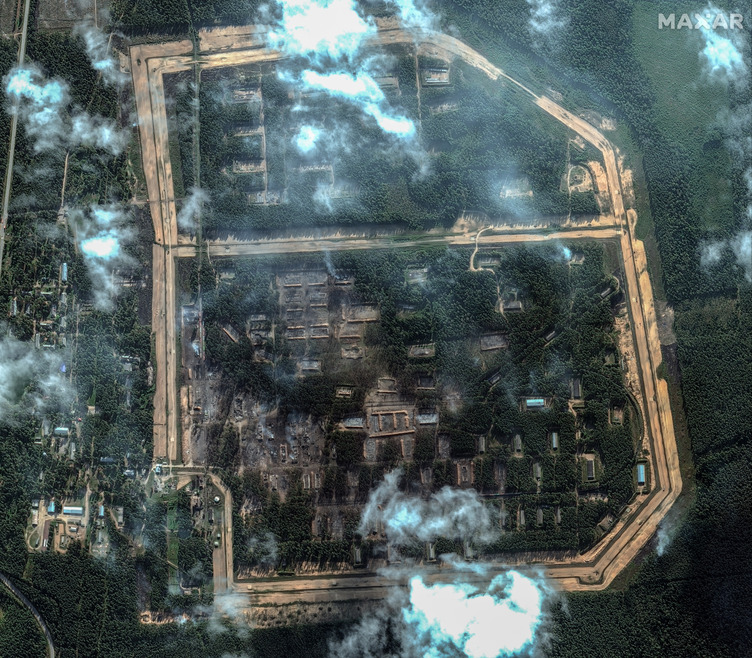
Another image of Oktyabsk taken Sept. 18 shows suspected missile canisters intact.
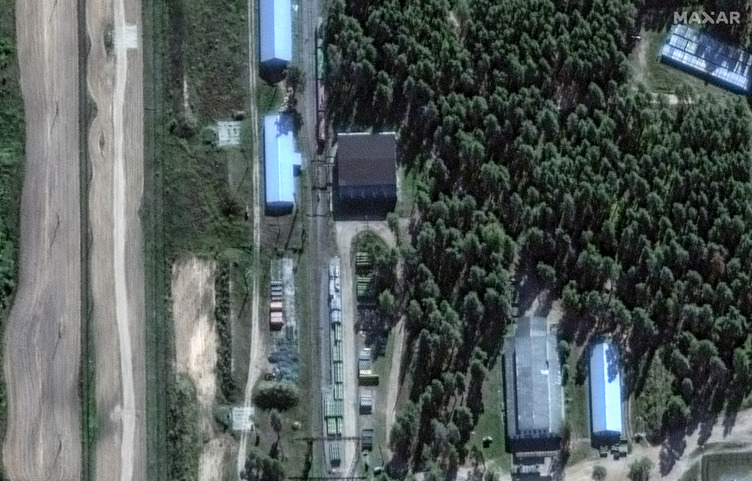
An image taken after the attack shows them, along with three buildings, destroyed.
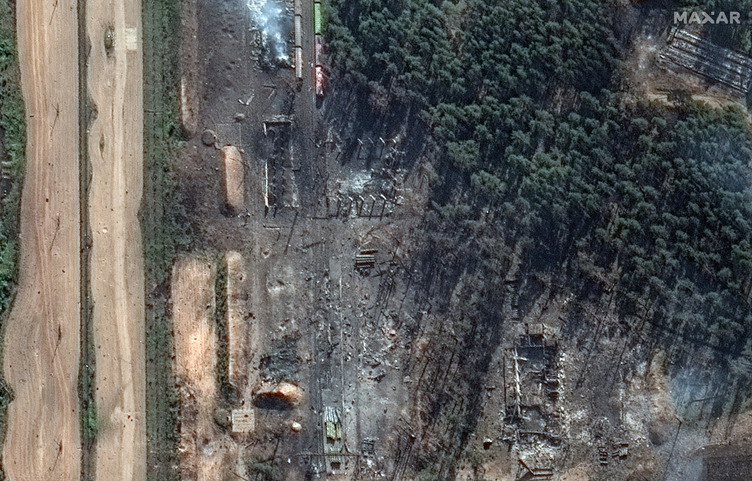
The Sept. 18 attack on Toropets destroyed about 30,000 tons of ammunition, according to Estonian intelligence officer Ants Kiviselg. Toropets is about 230 miles west of Moscow and about 300 miles north of Ukraine. The following video shows the first moments of that attack.
A Maxar satellite image taken Sept. 7 shows dozens of ammunition storage buildings at Toropets, all intact.
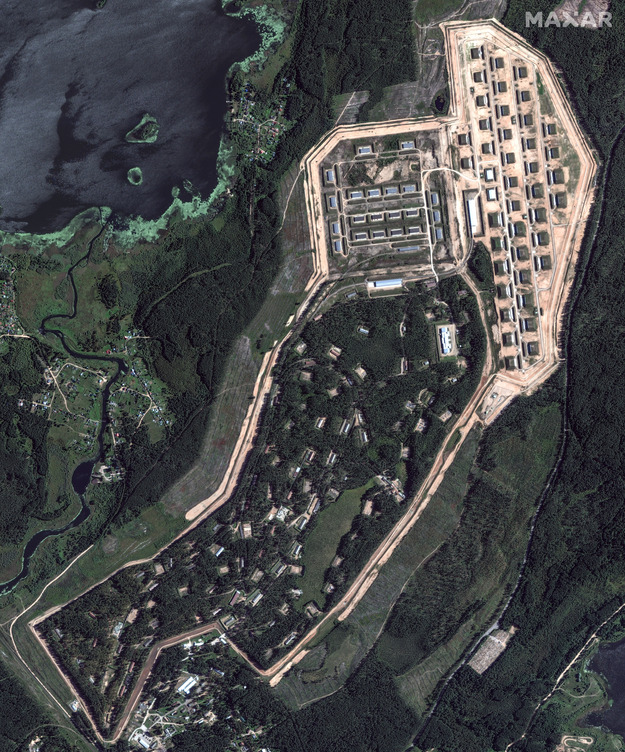
An image over the same area taken Sept. 22 shows the vast majority of those structures were destroyed or seriously damaged.
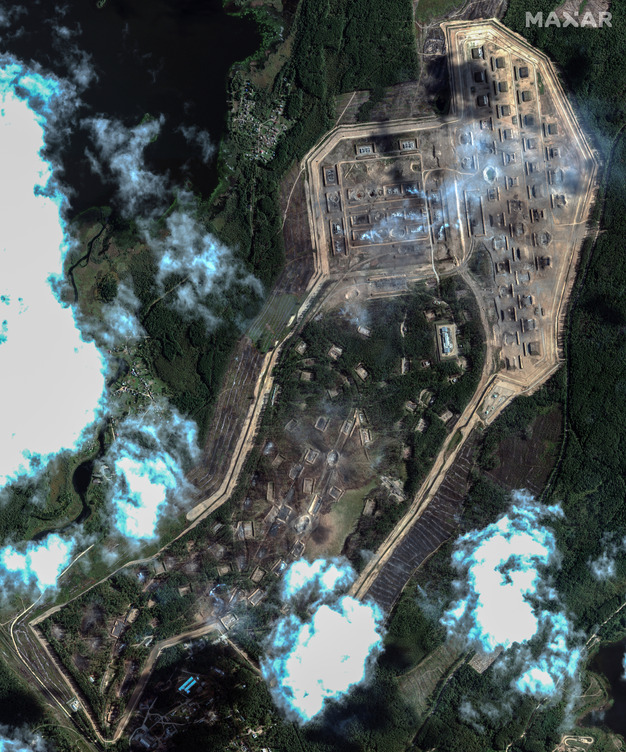
A closer view shows a huge crater and downed trees. The explosions were so powerful that a light-magnitude earthquake was reported in the Tver region, registering at 2.8 on the Richter scale.
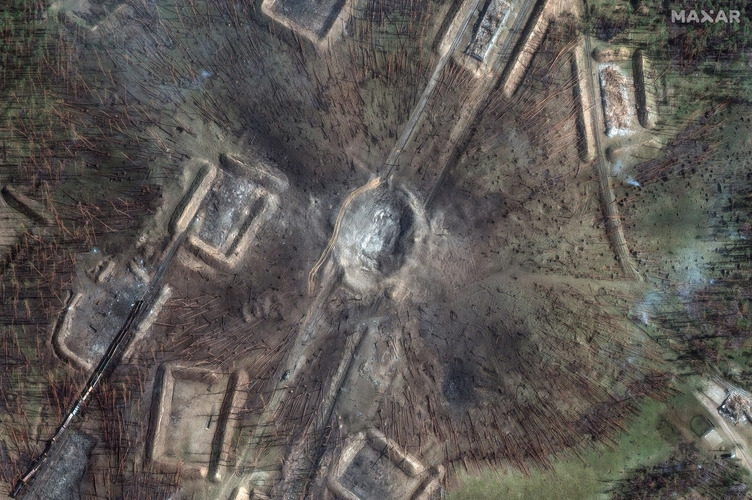
Maxar also capture a satellite image of rail cars and a crane offloading material at Toropets on Sept. 7.
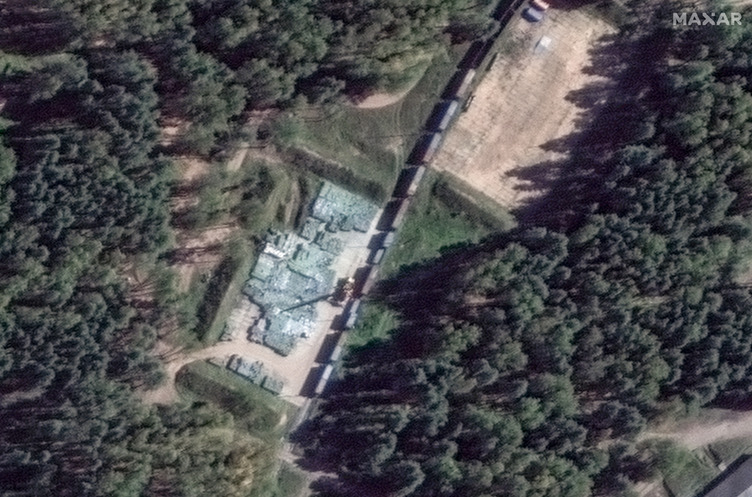
A satellite image taken afer the attack shows that the crane, several of the rail cars and the materials were destroyed.
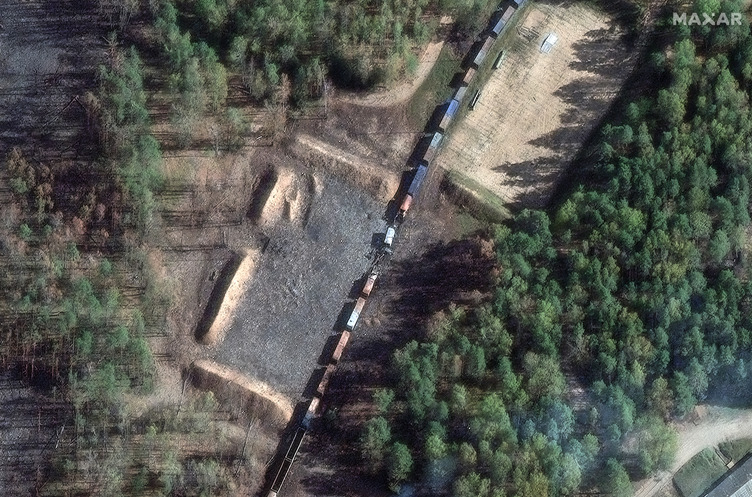
These attacks occured on some of Russia’s largest ammunition storage facilities. How badly this will hurt its ‘Special Military Operation’ remains to be seen, but they show that Ukraine’s long-range drone attacks continue to help offset Russia’s advantages in the amount of troops and war materiel they have.
The strikes on the ammunition storage area also came ahead of Ukrainian President Voldoymry Zelensky’s visit to the U.S. this week, where he said he will present his Victory Plan to President Joe Biden as well as candidates Kamala Harris and Donald Trump.
Among other things, the plan is said to include yet another appeal for the U.S. to end restrictions on the use of donated weapons deep into Russia.
If that does not happen, Ukraine will have to continue to rely on its homegrown weapons to hit targets like those above. But while smaller drones rely on careful targeting to trigger a chain reaction of secondary explosions, the missiles the U.S. and its allies have provided can puncture even highly hardened storage areas, making totally devastating ammunition storage sites all that much easier.
Contact the author: howard@thewarzone.com
